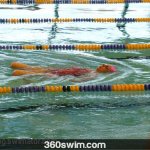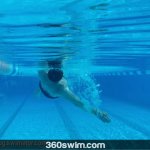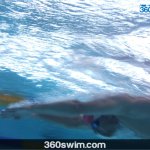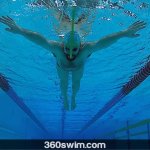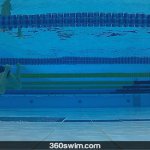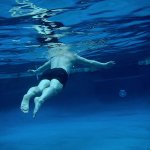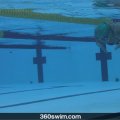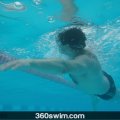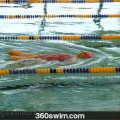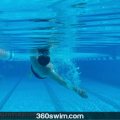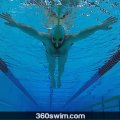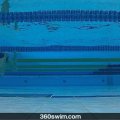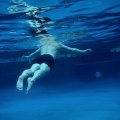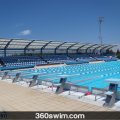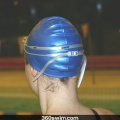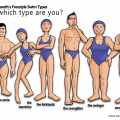BREASTSTROKE LIKE AN INCH WORM
Breaststroke is the easiest stroke to swim casually, but it's one of the hardest to swim correctly. The difference between a relaxed "Mrs. Mayor" breaststroke and a competitive one is all in the details, tiny adjustments that eliminate drag and convert every ounce of power into forward motion.
This advanced lesson, featuring analysis of a masters world champion, will dive into those details. We'll explore two key concepts: perfecting the underwater pullout and swimming like a horizontal "inchworm" to create a more efficient and powerful stroke.
Dive Into: Advanced Breaststroke Technique
- The Devil is in the Details
- Tip #1: Perfecting the Underwater Pullout
- Tip #2: Swimming Like a Horizontal Inchworm
- The Takeaway: Small Changes, Big Results
- Frequently Asked Questions
The Devil is in the Details
Many open water swimmers or triathletes use breaststroke to take a break or to sight their target. Because so many people can perform some version of the stroke, one could assume there is not much to it.
As someone wise once said though, "the devil is in the details," and this principle is especially true for swimming breaststroke at a higher level.
On my master's swim team in Finland, I have a very capable breaststroker, Johanna, who is a multiple national record holder and a World Masters Champion. Since she has already mastered the common beginner breaststroke mistakes, we need to look at her stroke from different angles to find room for improvement.
One of the best approaches for an advanced swimmer is to focus on the tiny details of the streamline, converting all her power into forward motion by minimizing any movement that causes drag.
Tip #1: Perfecting the Underwater Pullout
To make her body glide smoother, we made an underwater video of Johanna's breaststroke and analyzed her stroke.
🎥 Watch: Underwater Stroke Analysis
Here are the pointers you can take away from the analysis, focusing on the streamline off the wall and during the underwater pullout.
It is very important to keep the body in a long, tight streamline when coming off the wall. Since your momentum is at its peak, your speed is fastest during this phase. You need to take advantage of this by making sure your body is as smooth as an arrow.
After the initial glide, you perform the underwater pullout. Even with a perfect streamline, a lot can go wrong here. Any movement that deviates from your body line or goes against your direction of travel is a hindrance.
a) The Initial Arm Pull Make sure to pull water backward and not lift your body up in the water column. This is a very common mistake. Many swimmers get excited and try to make the pull as large as possible, not realizing that their body is bending under the pressure and they are traveling upwards in an abrupt jump instead of smoothly forward.
This first breaststroke pull is nothing more than anchoring your arms in the early vertical forearm stage and moving your body forward around those anchors. It cannot be rushed, otherwise you will miss out on the proper initial catch.
Hint: after you finish your catch and are gliding, try shrugging your shoulders forward. You will be amazed at the effect.
b) The Arm Recovery After you pull and glide, you need to move the arms back forward. During this recovery, your elbows can easily come high above your back and your hands far from your body, causing drag. Keep your arms and elbows as close to your body and chest as possible to minimize this and finish in a tight streamline.
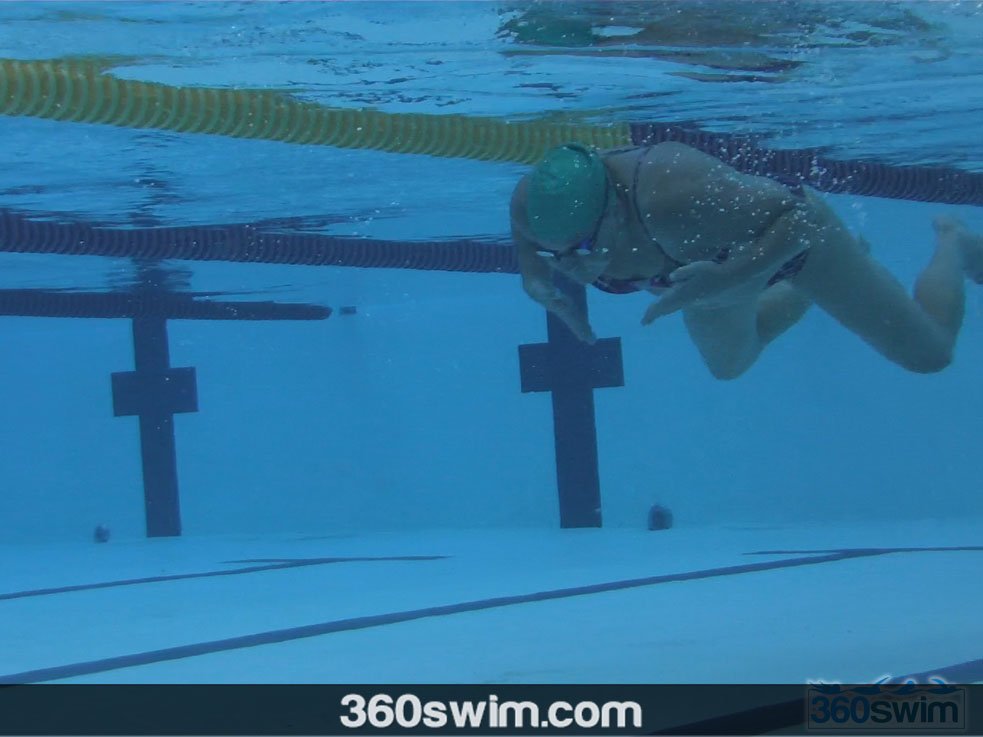
c) The Breaststroke Kick The kick that follows the recovery can also slow you down. When you bring your heels to your butt, the motion is against the direction you want to go. The kick needs to be narrow, staying within the "hole" your body has already made in the water.
First, do not bring your knees forward; keep them back and think "heels to butt." A great drill is practicing the kick on your back while keeping your knees underwater.
Second, when you do the actual kick, don't just press out. Push the water backward as if there was an imaginary wall and you are using your outwardly rotated ankles and shins to push off it.
Finally, squeeze your legs together. Use your butt cheeks and inner thighs at the end of every kick to snap the soles of your feet together. This ensures your body is in a perfect streamline during the glide. (Word of caution: this is tiring, so introduce it into your stroke gradually, for example, every other lap).
Don't forget the one allowed dolphin kick during the underwater pullout phase.
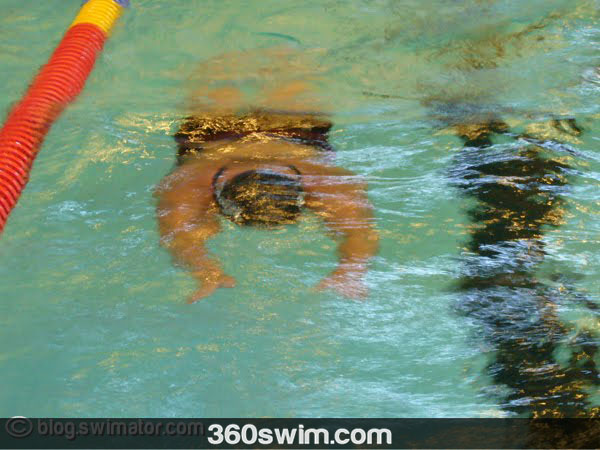
Tip #2: Swimming Like a Horizontal Inchworm
This is another area where breaststroke can go wrong. If you look at most swimmers, you'll see a large up-and-down wave motion. After the arm recovery, their hands shoot forward and downward, causing the entire body to follow.
Many coaches compare breaststroke to butterfly, which encourages this wavy motion. However, a more accurate and efficient way to swim breaststroke is to think of an inchworm moving on a horizontal plane.
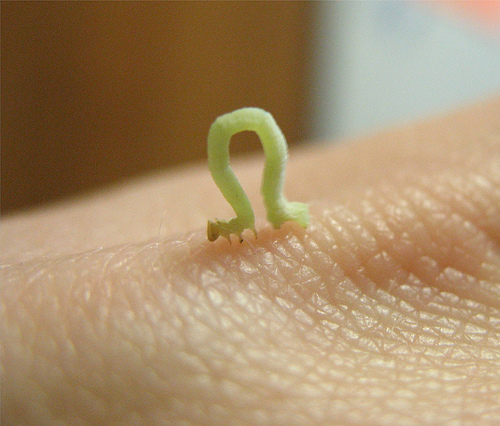
The front and back parts of the worm get closer and further apart, but they stay on the same level. There is no big up-and-down motion. Your arms should shoot straight forward, keeping your body line flat and close to the surface.
The Takeaway: Small Changes, Big Results
These pointers are advanced, but they highlight a key truth: to optimize your swimming, you must pay attention to everything your body does. Even the top swimmers in the world are constantly battling these tiny details.
Johanna has been working hard on these small improvements, and her results speak for themselves. The hard work paid off. She was second in all her breaststroke events in the 2011 European Masters Championships in Yalta, in 2019 World Masters Swimming Championships in 200 breaststroke she brought home the gold.
The above pointers are quite advanced when it comes to learning the correct breaststroke technique as they are tedious details, however, no matter what your breaststroke skill level is, you can take away the fact that swimming is not as simple sport as one might thing.
The truth is actually the opposite, since water is so much denser than air, to optimize a swimming movement, one must really pay attention to everything a body does, be it better streamline or less up and down motion etc.
So be patient, be mindful, and go out there and optimize your breaststroke!
Frequently Asked Questions
What does it mean to swim breaststroke like an 'inchworm'?
It means your body should move on a horizontal plane, getting longer and shorter like an inchworm, rather than moving in a large up-and-down wave. The goal is to shoot your arms straight forward, not down, to maintain momentum.
What is the most important part of the breaststroke underwater pullout?
The most important part is maintaining a tight streamline. Your initial pull should be a powerful anchor to move your body forward, not a large movement that lifts your body upward. Every part of the pullout should minimize drag.
How can I make my breaststroke kick more efficient?
Focus on keeping the recovery phase of your kick narrow. Bring your heels straight to your butt without letting your knees come forward under your body. This minimizes the resistance you create while setting up for the power phase.
What is the biggest mistake swimmers make with their body line in breaststroke?
A very common mistake is creating an excessive up-and-down 'wave' motion with the upper body. After the recovery, swimmers often shoot their hands downward, causing the whole body to follow. An efficient stroke stays horizontal and close to the surface.
How do I finish my breaststroke kick for maximum glide?
At the end of every kick, consciously squeeze your inner thighs and butt cheeks together. This action snaps the soles of your feet together, finishing the kick with power and ensuring your body returns to a perfect, tight streamline.
 LNURL1DP68GURN8GHJ7URP0YHRXD3SWDMKJMFWVDHK6TMVDE6HYMRS9A4HSCNCWFXSH3NN0H
LNURL1DP68GURN8GHJ7URP0YHRXD3SWDMKJMFWVDHK6TMVDE6HYMRS9A4HSCNCWFXSH3NN0H


